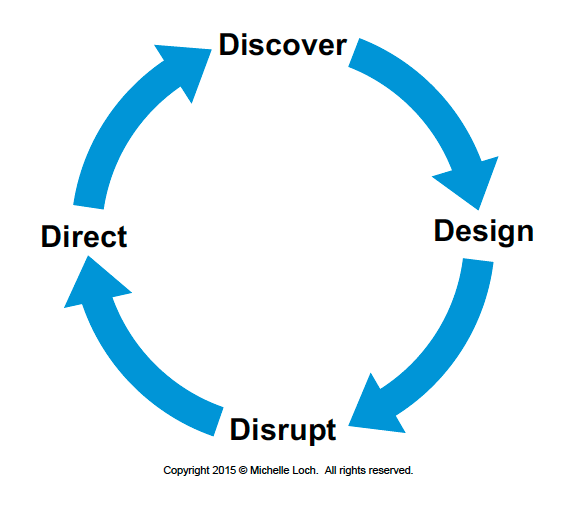So much is being written now about the “new black” – neuroscience – and specifically in the area of leadership. We talk a lot about neuroplasticity and cognitive bias and the like – which is useful, and interesting and happens to be my area of expertise and passion. Let’s look at the neuroscience of leadership – I’m all about rewiring!
But exactly how, in a practical way, can we rewire our behaviour? When I work with leaders, teams and executives, we use my 4D model for “rewiring.”
There are four steps:
Discovery
To begin the rewiring journey you must first embark on a journey of DISCOVERY. You must discover how you are wired! (And you do that through brain-mapping).
What is your brain wired to do well? Where are you “under-wired” and how is that impacting your behaviour and thinking patterns? Are those behaviours and thinking patterns serving you well? Are they supporting you to achieve the outcomes you desire or need?
You also need to discover the wiring of those around you – your team, colleagues and organisation – not to mention your clients and suppliers!
Design
Stage two of the journey requires you to reflect on your architectural plans for your new brain.
What wiring do you want? What are the habits, thinking patterns, behaviours and level of control that will take you to that new level of professionalism or behavioural outcome?
Just as the architect designs plans before the builder begins to build, you need to DESIGN your brain plan before you embark on the deliberate building of your neuronal networks.

Disrupt
Stage three of the rewire process is the toughest. We can’t “unwire” the wiring in our brain. The very act of trying to do that strengthens the wiring and hence the habits and behaviours driven by that wiring. The only way to rewire is to redirect attention to new wiring as per our design, but to do that requires us to be mindfully present and to override the urge to engage with the current wiring.
DISRUPTING is about noticing, remembering, and having a heightened awareness when the old, non-useful wiring jumps into play – and disrupting it.
Disruption might be an override – consciously inhibiting the desire to finish your new team members’ work so it gets done correctly and on time.
Disruption might be a redirection – a deliberate choice to direct attention to a new goal or habit or behavior.
And disruption might be a blatant, deliberate removal of stimulus. If getting distracted by social media or emails is a habit you wish to rewire turning devices off, or removing yourself from the work area where the distractions occur and maintaining the useful focus you require will assist in rewiring.
Direct
To complete the rewiring, you need to DIRECT attention to it in a way that is useful. New brain wiring strengthens in direct correlation to the density of attention it receives. There is a kind of hierarchy in terms of the usefulness of the attention you give. For example, in terms of strengthening the new wiring you are wanting to embed:
- thinking about it is good
- writing it down better
- telling someone about it even better
- teaching someone how to do it is best.
Repetition is also a form of attention density. The more times we repeat the thinking pattern or behaviour, the denser the wiring gets.
Rewiring your brain is simple (conceptually). Think about a habit or behaviour you would like to REWIRE and try this four-step model for yourself.
Michelle Loch, communications and leadership expert in the neuroscience of human motivation, powerful conversation and self-leadership











